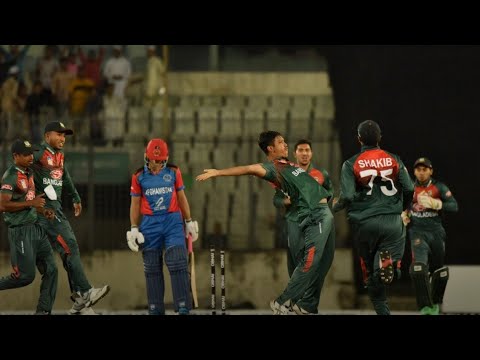The roar of triumph in Dhaka has been particularly satisfying for Bangladesh cricket, as the Tigers secured a commanding 2-0 lead in their three-match T20I series against Afghanistan. At the heart of this celebration is coach Phil Simmons, whose appraisal of his team’s performance paints a picture of a side embracing an “exciting, aggressive” brand of cricket – a tactical shift seemingly yielding dividends.
A Newfound Aggression and Resilience
Simmons` enthusiasm stems from more than just the scoreboard; it`s about the manner of victory. Bangladesh, historically known for a more cautious approach, has displayed a fearless aggression coupled with a remarkable ability to rebound from challenging situations. This was evident in both encounters, where the team faced formidable pressure but ultimately emerged victorious, often through the heroics of their less-heralded players.
In the first T20I, Afghanistan’s spin maestro Rashid Khan wreaked havoc, stripping Bangladesh of six crucial wickets for a mere nine runs. A collapse that would typically spell disaster was, however, deftly navigated by Nurul Hasan and Rishad Hossain, who steered the ship to port. The second match saw similar tremors, with Bangladesh losing three wickets inside the powerplay. Yet again, the middle order stood firm, with Nurul Hasan’s unbeaten 31 proving instrumental in a vital chase.
“The good thing about winning close games is that you gain confidence when you are coming to a close game,” Simmons noted, with a hint of irony perhaps, given the stress such finishes inflict on spectators and coaches alike. “It`s good that we are doing that, but it`s not good for any of us our hearts.” This candid admission underscores the nail-biting nature of their victories, which, while testing the nerves, are undeniably forging a tougher, more confident unit.
The Middle Order: Bangladesh`s Unexpected Anchor
The consistent contributions from the lower middle order have been a particular highlight for Simmons. Players like Nurul Hasan have demonstrated an impressive ability to absorb pressure and accelerate when needed, transforming precarious positions into winning ones. This shift from relying heavily on top-order batsmen to a collective responsibility is a significant development for Bangladesh cricket. Simmons emphasized this, stating, “That`s what we have been asking our batsmen to do: make sure that they take responsibility when they get the chance.”
Even Jaker Ali, who had endured a lean patch, found his rhythm in the second match, striking 32 off 25 balls and hitting his first six in seven innings. Simmons, ever the pragmatist, brushed aside concerns about Jaker`s earlier form, observing, “When you look around the world, international batsmen fail a couple of times. I don`t see any problem; he had a couple of bad games, and that`s normal with batsmen. Cricket is like that.” Such faith from the coach is crucial for player development and confidence.
Bowling Unit: The Unsung Heroes
While the batting heroics grabbed headlines, Bangladesh’s bowling attack has quietly established itself as a reliable force. Shoriful Islam, Nasum Ahmed, and Mohammad Saifuddin have been central to this transformation, delivering tight spells and executing plans under pressure. In the second T20I, they conceded a mere 35 runs in the powerplay and restricted Afghanistan to just 40 runs in the final five overs, a testament to their improved discipline and tactical acumen.
Simmons was quick to praise their evolution: “I think our bowling has been improving consistently, and it is at a stage now where we know we can depend on our bowling, whatever combination we use.” This dependence, he believes, is a cornerstone of the team’s recent success and a vital component of their growth trajectory. The bowlers have repeatedly provided the platform, allowing the batsmen the breathing room to express their new aggressive style.
Looking Ahead: A Confident Horizon
Bangladesh’s T20I series win against Afghanistan is more than just a notch in the win column; it`s a statement of intent. Under Phil Simmons, the team appears to be shedding its historical inhibitions, embracing a dynamic style of play, and fostering a culture of resilience. The development of a robust middle order and a dependable bowling unit suggests a promising future for the Tigers in the shortest format of the game. While the heart-stopping finishes might require a greater supply of antacids for fans, they are undoubtedly building a team capable of thriving under pressure and challenging formidable opponents.
The upcoming matches, and indeed future tournaments, will be crucial tests for this evolving Bangladeshi side. But for now, Simmons and his squad have every reason to celebrate a series victory forged in aggression, resilience, and a newfound collective confidence.







